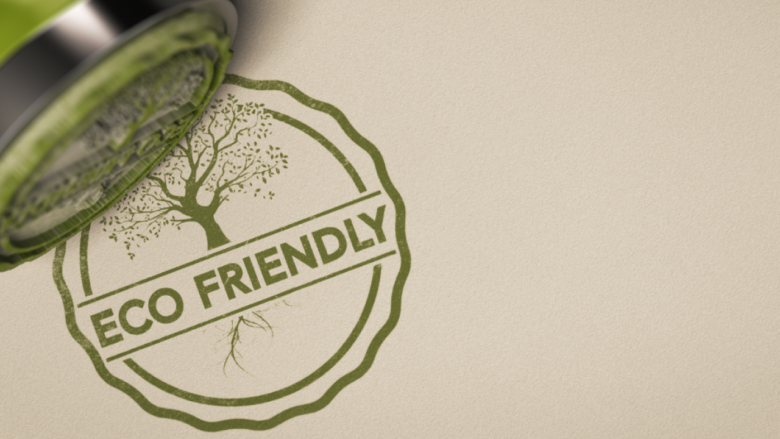When humans got more accustomed to using the internet around the globe, certain worries did arise. One such worry to mention here would be how technology, which generally seemed helpful, would also greatly increase pollution levels around the world. Thinking over the depletion of resources along with the degradation of the environment made things quite unsettling regarding the future. So, one does wonder, what does the future hold regarding pollution? Well, there is a small population of people who think pollution levels will drop and net zero will be achieved. With that said, developments in technology seem to open new doors to possibilities that can gradually make the world a better place.
Taking a closer look at the current state of affairs, technology seems to be making soaring strides in many industries, which seem to focus on combating pollution on a greater level than it ever has been. Innovations such as utilizing green tech approaches, for instance, but not limited to efficient energy sourcing, logical resource allocation, and extensive waste management all seem to be used in day-to-day practices. Considering the efficiency and profit businesses are likely to be able to make by reducing carbon emissions and using eco-friendly devices to conduct day-to-day practices, being environmentally friendly sounds appealing.
Technological Growth and its Environmental Consequences:
It is no surprise that technology has integrated with our lives and improved our daily activities; however, it has brought negative impacts to us, and one of them would be structural damage to the planet. Manufacturing devices such as phones requires a large number of materials, and harvesting metals like cobalt and lithium degrades ecosystems. It is hard to argue that the raw materials will carry minimal impacts on mining the resources.
As the years pass and more solar technology is intended to be manufactured, the amount of waste generated each year will only worsen if sufficient steps are not taken. This waste accumulates in landfills and within the ocean, causing additional pollution. The use of energy is another growing issue; the most common services cloud servers use allow data centers to use electricity, which in turn creates more global carbon emissions. No one wants to be a double standard and say yes to all technologies being bad while using them. Going forward, it will be important to demarcate between which have a negative impact and which don’t, so that we can strive towards development without harming the environment.
Green Tech and How It Revolutionizes Business Growth:
The introduction of green technology helps enhance business development and enables firms to attract large volumes of clients, especially those conscious of the environment. As bonds and trust increase in customers, sales increase, as well as brand reputation strengthening the company. The introduction of green tech also contains cost-effective measures; energy-efficient technology removes waste and makes operations more efficient, allowing businesses to cut down on electricity expenses.
In addition, going green enhances employee morale. Employees like the fact that they work for a company that cares about the environment. This results in increased output while decreasing the number of people leaving the organization.
Achieving regulatory compliance becomes less of a challenge too. Several areas have such policies that encourage the adoption of such practices, enabling them to benefit from tax rebates or grants. Purchasing green technology encourages creativity. Companies are encouraged to think outside the box and develop solutions to address the current problems and even the future development of technology.
Green Technology at Workplace: Problems and Prospects
Moving to green technology in the office environment is a challenge. In most cases, such changes are met with hostility by those who are used to the old ways of doing things. Changing paradigms is as important as changing tools. Budget limitations are also a major challenge. Many firms are apprehensive about the debt that will catalyze adopting these standards. Nevertheless, they argue, the savings down the line will make up for what was put in.
Another challenge is the connection between the new technologies and the existing ones. There may be other obstacles that delay operations and cause dissatisfaction. But proper strategies and a test program can undo such problems.
Employees have to be educated on different sustainability standards. While this is important, many forget it. Providing courses or information materials increases the level of environmental awareness within the company. It can appear daunting to measure the impact of green policies without adequate metrics in place. However, once the KPIs are out in the open, it is also easier to manage the expectations and performance of the various players on the team.
Cost Savings and Further Benefits of Going Green:
There is a good chance that by going green, operational expenses will be kept to a bare minimum. Devices that are energy efficient do not need to rely on large amounts of energy, hence the lower electricity bill. In time, this kind of savings will add up rather quickly. In addition, there is a significant reduction in the maintenance and repair of green solutions. This is because they are built with smart designs using stronger materials, and therefore fewer repairs are required.
Moreover, going green will improve how the company is seen in the eyes of the customers. Sustainable efforts are appreciated by customers; hence, they are activated to support businesses that consider being environmentally friendly. On top of that, many governments encourage the use of green technology, so they offer subsidies for that. Not only so, tax cuts and subsidies make the switch even more favorable in financial terms. It has been established that green practices enhance employee retention. Employees take pride in their participation in an environmentally responsible entity, which increases morale and productivity in the workplace.
Smallest Steps to Ensure the Environment is Given a Thought:
Going green in the world today, which has all sorts of options available for technology, does not need to be hard or stress-inducing. Have you ever wondered why and how the life of an average employee has completely shifted? The main reason has to be the access and inclusion of technology in every possible aspect of human life. The first step in taking the initiative of going green is to assess the current technological devices present in the workplace. It seems as if this habit has a domino effect where it keeps impacting other individuals too. Over time, every small deed contributes towards making the planet a healthier place for everyone.
Identify whether it’s possible to introduce a dedicated e-waste area in your office. This not only assists in creating a sustainable redundancy but also assists in cultivating sustainability values. Moreover, use web-based services to eliminate the need for desktop devices while increasing interaction between users. Moving forward, further reducing the carbon emissions rate is the focus. By inculcating a sense of environmental responsibility in your business, you encourage other people to do the same.
Conclusion:
The world is evolving in various forms and trends, and staying up to date in an era of constant change is the true nature of business. Maximum sustainability at this point can be achieved through customized IT packages as they transform the entire business process, to say the least. It is one of the focuses on effective environmental management. Building a sustainable business further accelerates the development of technology. Optimizing business processes is especially true for eco-conscious companies.
Employees feel more engaged with their organization when they see it is taking real steps toward environmental stewardship. Such a culture of care does not only increase employees’ satisfaction but also many specialists interested in sustainable progress join the company. Every contribution is valuable, as it will result in a wise investment for the future. In this respect, businesses tend to do good for their society and the whole world by making appropriate choices regarding the environment.
On this journey to sustainable development, every action is important. The adoption of green technologies is not an option; it is a must if we want to survive and thrive in the future. There is a clear vision of the way ahead, with vast chances for development.
FAQs:
1. What is included in eco-friendly IT solutions?
Eco-friendly IT solutions include the use of those technological practices and products that can help lower the carbon footprint. This consists of energy-efficient equipment, sourcing sustainably while manufacturing or writing programs that would require the least resources.
2. How do I estimate the environmental effects of my current IT configuration?
Start with your energy consumption and your waste control measures. Devices like carbon calculators can help you approximate your carbon output, while assessments can highlight areas that require enhancement.
3. Are there any certifications for green tech products?
Sure! Products could have certification labels showing compliance with specific environmental standards. These could include Energy Star, TCO, or EPEAT (the Electronic Product Environmental Assessment Tool).
4. What are some simple ways to make my workplace greener?
The practice of urging the staff to switch off appliances that are not in use, purchasing low-power consumption appliances, encouraging all documentation to be done electronically, and opting for cloud facilities using renewable energy sources would help in greening the workplace.
5. Can going green save money for my business?
Certainly! Over time, many of the green technologies will require less power to operate as well as result in lower costs of waste removal.




